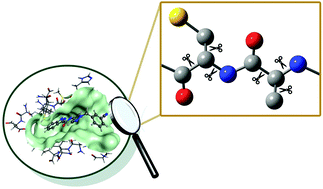Comparative assessment of QM-based and MM-based models for prediction of protein–ligand binding affinity trends†
Abstract
Methods which accurately predict protein–ligand binding strengths are critical for drug discovery. In the last two decades, advances in chemical modelling have enabled steadily accelerating progress in the discovery and optimization of structure-based drug design. Most computational methods currently used in this context are based on molecular mechanics force fields that often have deficiencies in describing the quantum mechanical (QM) aspects of molecular binding. In this study, we show the competitiveness of our QM-based Molecules-in-Molecules (MIM) fragmentation method for characterizing binding energy trends for seven different datasets of protein–ligand complexes. By using molecular fragmentation, the MIM method allows for accelerated QM calculations. We demonstrate that for classes of structurally similar ligands bound to a common receptor, MIM provides excellent correlation to experiment, surpassing the more popular Molecular Mechanics Poisson-Boltzmann Surface Area (MM/PBSA) and Molecular Mechanics Generalized Born Surface Area (MM/GBSA) methods. The MIM method offers a relatively simple, well-defined protocol by which binding trends can be ascertained at the QM level and is suggested as a promising option for lead optimization in structure-based drug design.



 Please wait while we load your content...
Please wait while we load your content...